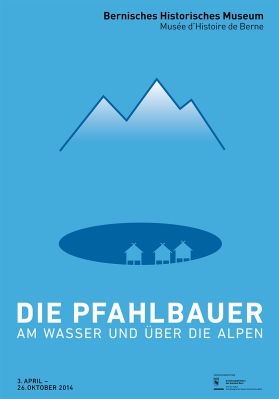The first European Neolithic site I dug was in the south of the Netherlands. All we found were post holes, colourful traces in the yellow sand. We found a handful of pottery shards and a few flint tools, and not very nice ones either, as far as I remember. We were most excited about the remains of traces of old top soils from various periods, or at least I was. It was all very different from the Pre-Pottery Neolithic sites in Jordan I had worked on, where we found huge quantities of finds as well as standing walls.
Yesterday was the official opening of the new exhibition at the Bernisches Historisches Museum. A new temporary exhibition on the Pfahlbauer – Am Wasser und über die Alpen (The Pile Dwellers – on the water and over the alps). And it’s a jaw dropper! I remember the reverence in the voice of the lecturer – I think it was Prof. G. Barker – of our introductory course at University of Leicester. There was obviously something very special about these Swiss Lake side villages. And indeed, you do not have to work in Swiss archaeology long to realise there is something extraordinary about these sites.

Visual zur Wechselausstellung «Die Pfahlbauer – Am Wasser und über die Alpen»
© Bernet & Schönenberger, Gestaltung und Typografie, Zürich
In the middle of the 19th Century Switzerland made a new start, with a new constitution and a new political organisation. Around the same time the first Lake side villages were discovered when, during a dry summer, water levels in lakes across the country dropped dramatically. The inhabitants and builders of these Pfahlbauten, or pile dwellings, have since played a remarkable symbolic role in the building and maintaining of the Swiss national identity. The exhibition, however, only goes into this very briefly and mostly pictorial.
For me as an archaeologist one of the most exciting aspects of these Neolithic and Bronze Age sites, which date between 4300 – 800 BC, is the Continue reading


